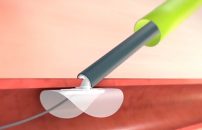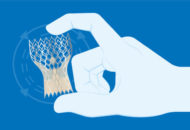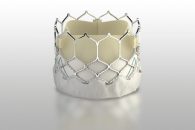Performing balloon predilation or valvuloplasty before a transcatheter aortic valve replacement (TAVR) may increase the incidence and magnitude of myocardial injury with new-generation balloon-expandable valves. Some papers argue in favor or against direct implantation, others remain neutral, but this research is the first one to express a different point of view. Historically, the biggest fear…
Diastolic Dysfunction and TAVR: Prognosis before and after Procedure
The PARTNER 2 SAPIEN 3 showed baseline diastolic dysfunction is a predictor of clinical events after 2 years of TAVR. As expected, improved diastolic function after procedure immediately changes prognosis. Though these outcomes did meet our expectations, very few studies have shown hard evidence linking diastolic dysfunction and aortic stenosis. All patients included in the…
Coronary Access After TAVR: A Potential Problem Ahead
Coronary cannulation after transcatheter aortic valve replacement (TAVR) was unsuccessful in almost 10% of patients. This problem occurred almost exclusively in those who received a self-expanding valve. This study, recently published in JACC Cardiovasc Interv., was sought to investigate the feasibility of coronary ostia access after TAVR and describe potential predictors of coronary access impairment.…
Suture-Based Percutaneous Closure vs. Plug for Large Arteriotomies
This research was designed to test the superiority of plug-based vs. suture-based vascular closure devices in large arteriotomies, such as transcatheter aortic valve replacement (TAVR). Vascular complications from TAVR are relevant and, in many cases, derive from problems with the closure device. The MASH (MANTA vs. Suture-based vascular closure after transcatheter aortic valve replacement) study…
Should We Discontinue Anticoagulation Before TAVR?
Against what common sense dictates, continuing oral anticoagulation pre- and post- transcatheter aortic valve replacement (TAVR) is safe, according to this article soon to be published in JACC Interventions. There was no increase in hemorrhagic or vascular complications and, paradoxically, those who continued using anticoagulant agents received fewer transfusions that those who did not. A…
New Valvular Heart Disease Guidelines with Key TAVI and Mitral Regurgitation Updates
Valvular heart disease management guidelines were updated last week by the AHA and the ACC. The last complete version had been published in 2014; therefore many of its recommendations have become obsolete before the latest evidence. The studies that made the FDA approve TAVI for low-risk patients are probably the most important incorporations. They also…
Risk of Coronary Obstruction in Repeat TAVR
As we gradually consolidate the information on the duration of transcatheter aortic valve replacement (TAVR) the focus seems to be moving towards the feasibility of repeat TAVR. How long the valve will last no longer matters as much as how feasible a new procedure is. The supra-annular leaflet position and tall stent frame of the…
Transfusion in TAVR: Caution Is Best
Periprocedural red blood cell transfusion in transcatheter aortic valve replacement (TAVR) correlates with increased mortality and acute kidney injury. It also resulted an independent predictor of 30-day mortality, irrespective of bleeding and vascular complications. The global trend that limits transfusion, in all procedures in general, has finally reached TAVR. The multicenter registry TRITAVI (Transfusion Requirements…
ProGlide vs. Prostar XL to Close Post-TAVR Access
Minimalist transcatheter aortic valve replacement (TAVR) is a strategy that is here to stay. We have previously published papers comparing local vs. general anesthesia, use of transthoracic vs. transesophageal echocardiography, and early discharge in TAVR. In all these papers, the “minimalist approach” included percutaneous closure of vascular access. However, few papers compare closure devices in…
NT-proBNP Level Predicts Who May Benefit From TAVR
A normal or (on the other end) a very high level of NT-proBNP should make us look for a cause other than aortic stenosis. If aortic stenosis is not the culprit of the clinical case, a transcatheter aortic valve replacement (TAVR) will hardly benefit these patients. These data come from a recently published paper in…
Sapien 3 Performs Well in “Jobs” for Which It Is Not Designed
Using Sapien 3, transcatheter mitral valve replacement to treat failed bioprosthetic valves can be performed with a high degree of technical success. Failed mitral bioprosthetic valves are truly challenging due to how frequent symptoms are and the high morbidity/mortality associated with a new surgical replacement. Furthermore, there are no catheter options specifically designed to treat this…








